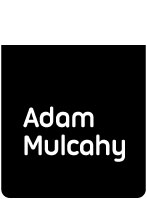I have watched four films recently that are examples of the importance of good access and building good relationships with contributors. The first films watched was
Paradise Lost: The Child Murders at Robin Hood Hills (1996) along with its predecessor).
Paradise Lost 2: Revelations (2000) Directors Joe Berlinger and Bruce Sinofsky originally made a film about a triple child murder for which three young men were found guilty for. The first Paradise Lost film showed how the court case developed, and the contempt of the law which developed as the three young men were accused of following satan and listening to heavy metal... Four years after the film, Berlinger and Sinofsky return to Arkansas as a lengthy appeals process is underway focusing on all three men but specifically on Damien Echols who was described as the main protagonist and is currently on death row in the US. The second film focuses on many of the same people, such as Echols, his lawyer and one of the murdered boys parents. The case has also developed a large following of action groups and even celebrities who campaign for a retrial in the light of new DNA evidence.
The Second pair of films are about Aileen Wuornos who in 1990 was dubbed as America's first female serial killer after killing eight men in the state of Florida. Director Nick Broomfield's initial film is primarily concerned with Aileen's story, and more importantly the monetary gain sought to be made by her lawyer, her adopted mother and the police. All of whom are shown throughout the film as trying to sell the story illegally to Broomfield and film producers.
The first film Aileen Wournos: The Selling of a Serial Killer (1994) is then followed by
Aileen: Life and Death of Serial Killer (2003) In which Broomfield returns as a witness to an appeal case against Aileen's four death sentences. Throughout the near ten years between films Broomfield remained in occasional contact with Aileen whom he found to be the most genuine person out of all the participants.
All these films exhibit great skill by the film makers in how they deal with participants. The films are in no way "sit on the fence" types, they challenge and clearly develop particular arguments which did raise questions and piss people off, in some cases showing particular individuals very unfavourably. Nevertheless it is credit that even with these individuals access was still granted a second time. I think a key element to this kind of "return" film is the contributors attitude towards the film maker. The relationship between director and participant is key at all times. Occasionally it may seem that bridges have been burned, but time after time, with a good relationship foundation and truthful representation (even if it seems crazy) people will talk again.


